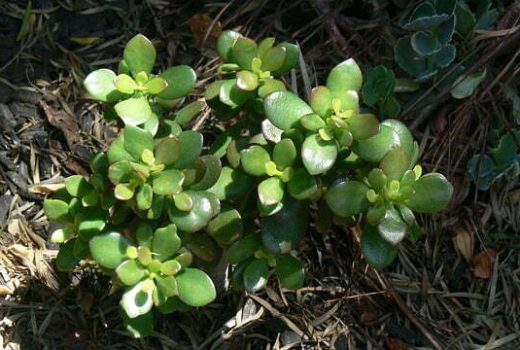The jade plant, also known as the friendship tree, is a tropical shrub that can be grown outdoors in mild winter regions or kept as a houseplant in cooler climates. It thrives in indoor environments with bright light and some direct sunlight but can grow into a large shrub if planted outdoors. Learn how to propagate jade plants from cuttings in this article.
Best time for Jade Plant Propagation
The best time to propagate them is in spring or summer when they are energetically growing. However, you can make new jades out of old ones any time of the year.
Some Methods of Jade Plant Propagation
- Jade Plants are tough and propagate easily
- Start with root cutting
- Remove the spear, leaving only the root
Through Seed
Jade plant propagation by seed is for the advanced gardener. Jade plants are difficult to propagate from seed, and seed-grown plants will rarely produce plants true to the parent plant. It takes several seasons for seeds to germinate, and the seeds need to be planted during the correct season. In three to four weeks, the seeds will germinate.
Through Plant and Roots
It is easy to propagate jade plant cuttings.
A cutting is a piece of the plant, up to 1/2 inch in diameter, that is taken from a healthy plant. The cuttings may be taken from the stem of the plant or any part of the root system. Cuttings rooted properly will form new plants.
A cutting is taken from a Jade plant and allowed to dry. The cutting is then dipped in rooting powder and placed in a glass of water. Roots will form in less than a week.
Once the cuttings begin to root, they should be repotted in larger pots. When the roots fill the pots, they should be repotted in larger pots once again.
Through Leaf
Jade plants can also be propagated from leaf cuttings taken from healthy adult plants.
Jade plants can propagate this way multiple times, but the seedlings will not always resemble the parent plant. Since Jade Plants aren’t very picky about soil, you can experiment with different mediums.
There are two methods for jade plant propagation. One requires cutting a branch and planting the new stem. The other involves rooting suckers.
- Root suckers are new stems that grow from the base of a plant. They are easy to root, but they take a very long time to grow.
Cutting a branch
The first method for propagation requires cutting a healthy branch from the plant.
- Make sure you choose a branch that’s at least three months old. Ideally, you’ll choose one that is about six months old, but it shouldn’t be any older than a year.
- If you don’t cut off the branch cleanly, it will come back as an ugly, misshapen, and weak plant.
- If possible, cut the branch close to the main trunk.
Planting and caring for jade plants
The jade plant is one of the most beautiful and hardy houseplants, but it’s notoriously difficult to keep alive.
If you give it the proper attention, the jade plant can live up to fifty years.
Preparing the soil
The most critical aspect of jade plant care is proper soil preparation.
- The soil should have a pH level between 6 and 7, with a slightly acidic reaction, and it should be on the drier side. Most soil found in the average home isn’t ideal for jade plants, so you’ll need to amend it before you can plant.
- Add lime to raise the pH, drain the soil and remove any clumps of debris.
Next, scoop the soil into pots and loosen the soil.
- If your soil is already loose, you can skip this step. If not, loosen the soil with your hands and push the soil up the sides.
- If you’re planting a jade plant into a larger pot, you’ll want to add an organic fertilizer to the soil before you plant.
This will provide your plants with an added boost and help them get a good start
Planting
- After you’ve prepared the soil, carefully remove the plant from its container.
- Carefully root the plant by planting the root ball of the plant in loose soil.
- If you’re planting a jade plant from a larger container, simply remove the plant from the pot.
- Gently loosen the soil around the plant’s roots.
- Place the plant in loose soil in the pot, making sure the root ball is at the same level as the soil around the pot.
- The roots should be slightly deeper than the surface of the soil

